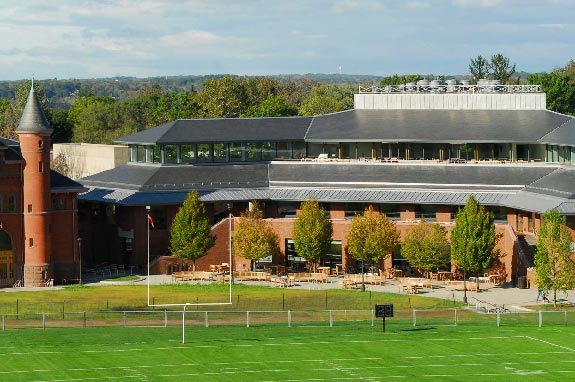
Photo: Wesleyan University. Retrieved from: www.wesleyan.edu
Wesleyan is one of the three colleges in the historic Little Three colleges, alongside Amherst and Williams College. Wesleyan University accommodates around 3,000 undergraduates, a number that is small compared to other universities but significantly bigger than the other two colleges in the consortium.
There are 40 departments for undergraduate academics, which offer more than 900 courses per semester, as well as individual tutorials. Students are not allowed to take minors, but can take up another major. A sizable percentage of the student body graduates with double majors.
School History
Founded in 1831, this university was the beneficiary of donations from well-off Middletown residents and was established by the Methodist Episcopal Church. This university was named in honor of the Methodist founder, John Wesley, and is noted for being the first institution that was named after him.
The university tried to transform from an all-male institution to co-educational in 1872 and a small number of female students were admitted. In 1912, the college returned to the original all-male arrangement. It was only in 1970 that Wesleyan University once again accepted female students.
Wesleyan severed its affiliation with the Methodist church in 1937, but renewed it again in 2000. The reorganization of the University was done during the time of University president Victor Lloyd Butterfield in the 1950s. During this time, undergraduate study was divided into small colleges with corresponding residences for students. Each division had its own faculty. Two other departments were later created; the doctoral programs and a Center for the Humanities.
Campus Life
Many students agree that the main social and recreational place in the campus is the area around the Foss Hill dormitories. Most students hang out and find their own spot where they can enjoy the weather and cavort with their peers. Some organizations have their meetings here, while other students simply want to relax with their friends. This hill is also the venue for sledding during winter.
Like many of the private residential liberal arts schools in the country, Wesleyan hires the most qualified professors, and maintain a large collection in their libraries. There are also many extracurricular opportunities, including clubs, athletic teams and volunteer work. Students are friendly and intellectual. Some would even claim that they are fascinated with studying and homework. Most are involved in clubs, where leadership potential can be trained and industry leaders are developed.
It’s hard to imagine the frantic energy that goes on inside the classrooms and laboratories when you see students of Wesleyan at their most relaxed. The pressure isn’t easy when it comes to Wesleyan academics, but all the students seem to take it in stride.
Students can obtain all that they need for sustenance on campus, with the many shops and dining places set up for residential students. There is a small marketplace where students can purchase their groceries and school needs.
Financial Aid
Wesleyan admits a diverse population of new freshmen every year, regardless of economic background and ability to pay for tuition and board. There are many students that apply for financial aid, and the school does its part to provide grants to these students who demonstrate financial need. On average, a grant amounts to around $40,000 per year. Loans are given out to students, but there are limitations on how much a student can borrow depending upon their year level.
